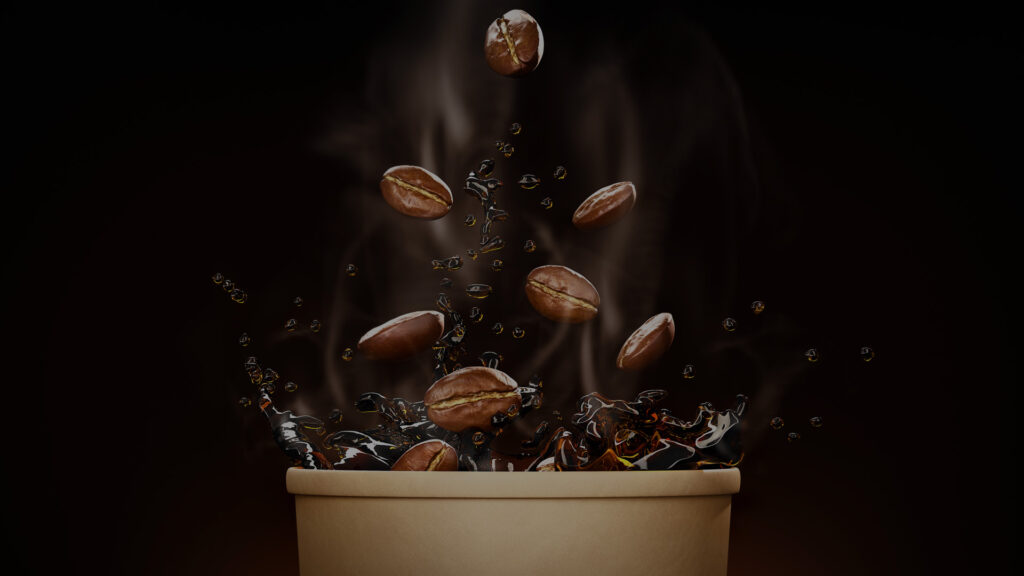Nothing is more distressing than sour coffee. Even poor coffee is preferable to weak coffee. If you expect a full-bodied brew and instead receive a watery mess, it might spoil your day. Therefore, if you’re unknowingly micro-dosing coffee, you could be scratching your head and thinking, ‘Why Does My Coffee Taste Watery?
Watery coffee is produced by a lack of flavor molecules from the coffee grounds in the water. This can be caused by an insufficient extraction time, an inappropriate coffee-to-water ratio, an insufficient water temperature, or low pressure.
However, all of these drawbacks are readily remedied for all coffee brewing techniques. Thus, if you stick to these fast and easy fixes, you’ll soon be drinking full-flavor, delicious coffee again.
If the water does not come into touch with the coffee grounds for an extended period of time, it will not absorb all of the great flavors from the coffee.
Depending on your brewing process, this can take several shapes. For example, not steeping the coffee long enough in a French press, or allowing the water to run too rapidly through your espresso puck or pour over. As a result, your coffee will be weak and unpleasant.
The French Press Solution
This is the simplest to correct:
It should take 4 minutes to extract French press coffee adequately. Hence, if you’re not steeping for 4 minutes and receiving weak brewed coffee, steep for a longer period of time. But be careful: steeping for too long can result in harsh coffee.
Fortunately, most individuals have a timer in their pockets – your smartphone. So nailing this little adjustment couldn’t be easier.
Pour Over
Your pour-over should take about the same amount of time – approximately 4 minutes.
If your water runs through the grounds quicker than this, making a brew in 2-3 minutes, your pour over coffee will taste watery or too weak. To get the desirable 4 minutes, try grinding finer to slow the water’s passage through the grounds.
In the case of espresso
If you’re using a 1:2 ratio of coffee grounds to brewed espresso but it’s too watery, grind your beans finer.
Utilizing a finer grind increases the amount of time the water spends in your coffee puck, resulting in higher flavor extraction. Ultimately, the optimal extraction should take 20-30 seconds.
The coffee-to-water ratio is incorrect.
Producing superb coffee is similar to following any other recipe. The appropriate amount and balance of materials are required; else, the whole thing will be thrown off.
In this situation, the proper amount of coffee for the volume of water is required to make a delicious cup of joe. Too little coffee or too much water can result in watery coffee.
Solution
French Press
Depending on how strong you want your coffee, the optimum ratio for French press coffee is anywhere between 1 part coffee to 11 parts water and 1 part coffee to 17 parts water. The more water you use in comparison to the same number of coffee grounds, the waterier your brew will taste.
If your French press tastes watery, use less water and the same weight of coffee grounds. To make arithmetic easier, use a French press ratio calculator, which will calculate the precise quantities in your selected units of measurement.
Pour Over
Pour over has a slightly varying ratio that is dependent on the equipment used. In general, strive for a ratio of 15 parts water to 1 part coffee. Nevertheless, it is dependent on whether you are using a Kalita Wave, Chemex, or V60.
With Espresso, things are a little different. You want a ratio of double the espresso out to the weight of coffee in (1:2). Hence, if you use one ounce of coffee grounds, you should receive two ounces of espresso. The crucial thing to remember is that this should only take 20-30 seconds to remove.
Espresso perfection is usually the result of a mix of circumstances. If your ratio is closer to 1:4, you must lower the water or raise the coffee dosage to achieve the right ratio of twice the weight of espresso out as coffee grinds in.
If you’re using a manual or semi-automatic espresso machine, you’ll need to halt the water flow sooner. If you don’t have control over this, you should increase the amount of ground coffee in the portafilter.
Incorrect water temperature
After the math lecture, it’s time for some science:
Chemical processes are accelerated by adding extra energy, such as heat. And the brewing of coffee is no exception. If your coffee comes out watery, it’s possible that your water isn’t hot enough.
Yet, if you go too hot, you’ll go from watery to burned coffee in the blink of an eye.
French Press Solution
When using a French press, make sure the water is barely off the boil before steeping. The optimal temperature in this area is around 200°F (93°C).
A temperature-controlled kettle is your best bet for getting this right every time. If you don’t have one, you may get your water to this temperature by boiling it for 2 minutes and then leaving it for another 2 minutes.
Pour over also works well with water that is approximately 200°F (93°C). Because it is a more accurate brewing process, we recommend utilizing a top gooseneck kettle for optimum results. This allows you to manage the temperature and flow of the water for the best extraction.
Espresso
Espresso is ideally served at roughly 200°F (93°C). If you have an espresso machine, the water should be heated to this temperature for you. Instead, if it has temperature options, you may raise it to the maximum level to try to cure espresso too watery.
If you suspect your espresso machine is broken, use a meat or milk thermometer to see how hot the water is coming out.
Inadequate Pressure
There aren’t many coffee machines that employ pressure. But, the ones that do are likely the most well-known: Espresso, AeroPress, and Moka Pot.
Brewing under pressure (the machine, not some strange hostage situation) accelerates the transfer of flavor molecules to water. This is one of the reasons espresso machines can provide full-bodied coffee flavor in just 20 seconds.
In the case of espresso
The water flowing too readily through the puck causes a lack of pressure in the filter basket. This might be due to one of two things:
- Too coarse a grind – If your grind is too coarse, your puck will have too many spaces for the water to pass through, resulting in a lack of pressure.
- Tamp is too loose – If you haven’t tamped the ground coffee beans hard enough, an identical problem will occur.
We propose grinding finer as a first solution because this is the most common cause of watery espresso shots. If you’re confident in your grind size, consider tamping with a bit extra pressure to achieve a better puck.
In the case of AeroPress
You apply pressure to an AeroPress by pushing down. If your AreoPress coffee is watery, try grinding finer (like with espresso) or using your entire weight to push the plunger down with greater power.
For the Moka Pot
There is just one reason for a Moka pot to brew with insufficient pressure: there is a problem with it. Thus, as long as you screwed it together correctly, you should be good.
If your Moka pot coffee is watery, finer grinding or adjusting the coffee-to-water ratio are the best remedies to assure delicious percolated coffee.
FAQs
What’s the deal with my watery instant coffee?
Instant coffee is brewed coffee that has been freeze-dried. To taste properly, it must be mixed with the appropriate amount of water. Add an additional scoop of coffee if your instant coffee feels watery.
Continue to add until you reach the desired strength.
What’s the deal with watery cold brew coffee? How to make iced coffee not watery?
Cold brew coffee takes around 18 hours to thoroughly infuse. Hence the reason your cold brew coffee feels watery is probably due to impatience and not allowing it to boil long enough.
To address this, use the same solutions as the French press. Increase the amount of coffee, and the steeping time, or brew on your counter at room temperature rather than in the fridge.
Why is the coffee in my drip coffee maker so watery?
The most common mistake when using a standard drip filter coffee maker is not utilizing enough coffee grounds. To achieve full-bodied drip coffee, use the amount advised by the manufacturer.
If it still doesn’t work, we recommend purchasing a different coffee machine.
What causes iced coffee to taste watery?
Iced coffee is created by chilling hot brewed coffee with ice. Which melts when it comes into touch with heated liquid. So all of your hard effort to properly balance your coffee and water ratio is undone by adding…more water. Alternatively, try adding whiskey rocks to obtain the same chilling effect without the diluted coffee flavor.
Daily Drip Coffee & Joe Brew Coffee’s Final Thoughts
The aroma of a newly prepared cup of coffee is enticing. If your first drink is thin and watery, you’ll be sent back to Earth with a thud.
Fortunately, it’s one of the simplest issues to resolve. It’s nearly always a simple fix to bring you back to that rich and flavorful brew you’re looking for.
Thus, the next time you ask, “Why does my coffee taste watery?” follow these instructions. You may need to experiment a little – adjust one factor at a time rather than all at once. Yet you’ll be drinking full-bodied coffee in no time.


